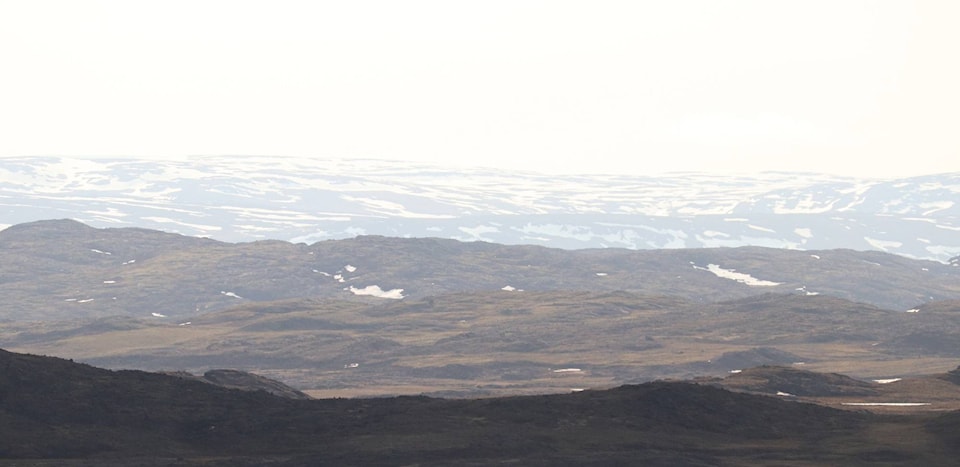As of July 8 the Nunavut Planning Commission has released an updated 2021 Draft Land Use Plan, the largest of its kind covering one-fifth of Canada’s area. The completion of the land use plan is a requirement under the Nunavut Agreement, creating a framework for development and conservation in the territory.
“We are excited to release this updated draft plan which takes a strong approach toward conservation and protecting Nunavut’s fragile environment and way of life, while supporting sustainable economic development,” said Andrew Nakashuk, commission chair.
“It reflects what we heard from the people of Nunavut and is in the interests of all Canadians.”
The 2021 Nunavut Draft Land Use Plan sets out guidelines for the use and responsible development of resources in the Nunavut Settlement Area. These include management of critical wildlife that may be under threat from climate change or other factors and a grandfathering of existing mineral rights in the territory.
Economic development opportunities such as the Manitoba-Kivalliq infrastructure corridor are supported, and the plan lays out where and when projects and economic activities can take place for landowners and users.
The Commission has received funding of $2.5 million from Indigenous and Northern Affairs Canada to hold an additional round of public hearings in the Kivalliq and Kitikmeot regions to gather more public feedback on the draft plan before it is submitted for approval.
They hope to conduct these regional hearings in November 2021, depending on funding availability hearings may also take place in early 2022 in Pond Inlet and Iqaluit.
“The Nunavut Draft Land Use Plan is a living document which guides and directs us into the future by establishing existing land use policies and designations that promote conservation, economic development and the health and wellness of residents,” said Nunavut Planning Commission executive director Sharon Ehaloak.
“The Commission is pleased to receive this funding to ensure that we get it right and our plan reflects the history and culture of Nunavut and its people.”
Key priorities identified by the Commission include protecting the environment, balancing economic development with quality of life and land use designations within the Nunavut Settlement Area.
Mixed-use areas make up the majority share of land and marine areas at 65 per cent of the total area. These have been identified for their potential to support a variety of land uses, and are characterized by no prohibited uses or conformity agreements. Limited Use Areas, characterized by year-round prohibitions on one or more types of land use, comprise 22 per cent of all land and marine areas in the Nunavut Settlement Area.
Mixed-use areas are generally less restrictive than other designations with industrial, traditional, economic, transport, research, and conservation projects being possible in these places with limited restrictions.
Places such as the Sanirajak beach area being one example of a mixed-use area, most activities are allowed, however oil, gas and mineral exploration are restricted.
Conditional-use areas, nine per cent of marine and land areas, consist of conformity agreements such as seasonal prohibitions on certain land uses, and setback requirements around important features.
Elements of conditional-use areas include restricted access to migratory bird habitat sites, when and where ice-breaking activities can start, as well as restricting certain projects during polar bear denning season (Sept. 15 to April 15). Areas with a higher risk to wildlife can also be designated as limited-use areas which carry more restrictions.
Limited-use areas have a significant amount of restrictions to land-use, not only on oil, gas and mineral exploration but also other projects such as quarries, hydroelectric and wind turbines over 15 metres in height as common examples.
These more restricted locations often consist of caribou calving grounds, walrus terrestrial haul-outs, or beluga calving areas.
An additional three per cent of land and marine areas are within existing established parks where the plan does not apply.
The plan is supported by a companion document, the 2021 Options and Recommendations, which summarizes submissions from planning partners and participants on identified issues, where there are 576 pages of recommended land use plan policies, describing the context, options and recommendations for the various land-use policies and designations.
Constraints for each area are considered and directions are made by commissioners.
It contains various areas of concern such as migratory bird setbacks, caribou seasonal restrictions, seasonal dates and background information.
Within the context provided by the companion document, the proposed Kivalliq-Manitoba Linear Infrastructure, as one example, was recommended to be designated as a limited-use area with only the facilities and infrastructure related to the project advised be built.
The updated Plan can be viewed online at Nunavut.ca.
